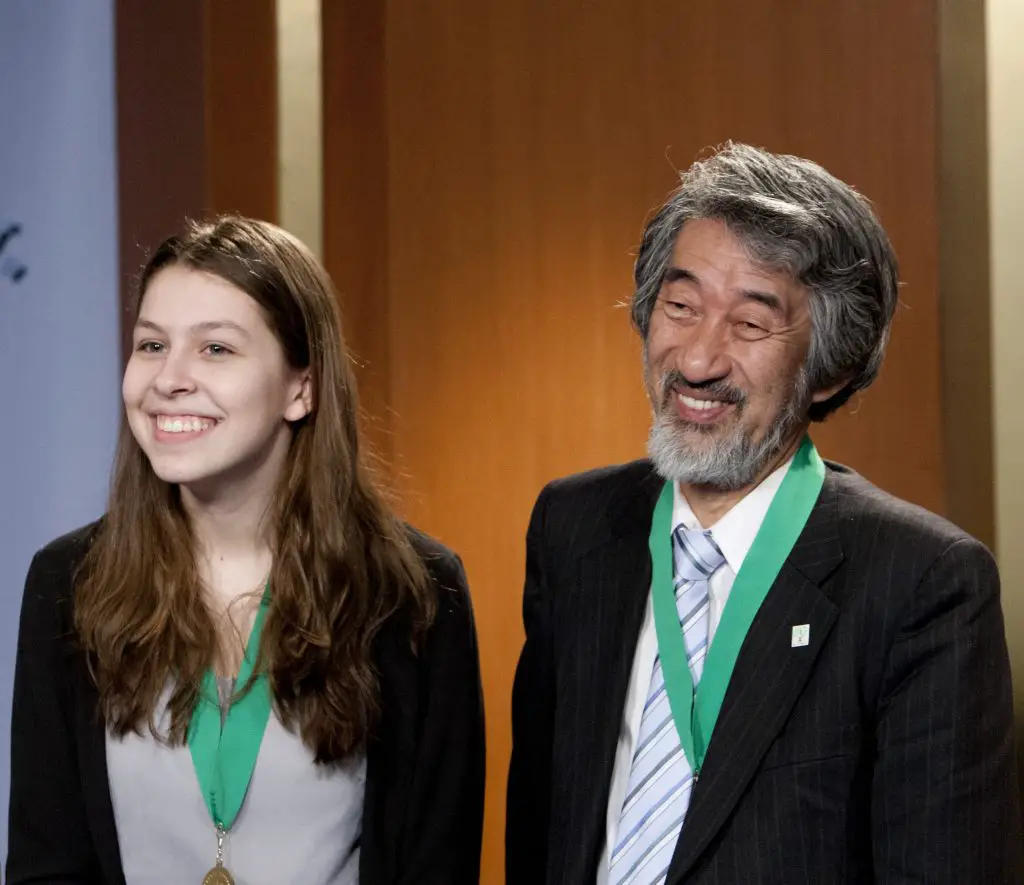Most people, I’m sure, don’t think much about what goes into a Girl Scout cookie. They know only that they’re delicious treats with whimsical names like Do-Si-Dos, Thanks-a-Lots or Thin Mints. And they know every spring, Girl Scout stands pop up everywhere to sell their cookies to willing passersby.
But most people don’t know the ingredients of a Girl Scouts cookie; aside from the occasional joke about how Thin Mints are filled with cocaine or some other addictive substance, they don’t care that much, either. However, Stanford senior Rhiannon Tomtishen, a former Girl Scout, did some research on one of the primary ingredients in those classic all-American delights: palm oil.
Tomtishen, who hails from Ann Arbor, Michigan, joined the Girl Scouts in the first grade. The Girl Scouts, she said, helped her develop an early passion for environmentalism.
“We’d do activities in our troupe, whether we did a downtown clean up or went to a park and helped out with clean up or mulching there. We did a lot of service in addition to educational activities learning about science.” Tomtishen says. “Girl Scouts was really my introduction to thinking about how I could make the world a better place.”
However, it wasn’t until the sixth grade when Rhiannon started to more extensively explore topics and issues in environmentalism.
“My friend and I, who were really inspired by Dr. Jane Goodall and her work with chimpanzees, researched the orangutan for our bronze medal project,” Tomtishen explained, “but as we were researching, we learned that one of the main reasons they’re endangered is because their habitat is being cleared for palm oil production.”
As a result, Tomtishen and her Girl Scout partner, Madison Vorva, started checking all the products they consumed on a daily basis for palm oil and discovered during Girl Scout cookie season that it had been an ingredient in the cookies for quite some time.

Palm oil is an ubiquitous ingredient; it is used in everything from shampoos and conditioners to detergents and soaps to, of course, baked goods. While palm oil itself is not inherently damaging, the means of its production certainly is. Thousands of square miles of Malaysian and Indonesian forests have been razed in order to sow oil palms.
Corporations and governments point to the efficacy and versatile properties of palm oil and to its function as a major source of income for developing countries; environmental groups decry the rampant deforestation necessary to create palm oil, the abuse of the environment and endangered species and the violation of indigenous rights.
While Tomtishen researched the scientific and social dimensions of palm oil production, the environmentalist in her was appalled. Ultimately, she looked to the foundational Girl Scout principles to bolster her beliefs.
“I had learned so much through Girl Scouts about the importance of making the world a better place,” Tomtishen said. “In fact, it’s one of the Girl Scout laws. So the use of palm oil in cookies seemed to be at odds with the values of environmental stewardship the organization itself promotes.”
Soon, what began as a poster-fair project spiraled into a nationwide campaign to get the Girl Scouts to rethink their relationship to the palm oil industry. However, for the first four years of the campaign, Tomtishen’s scope was restricted to the local Ann Arbor community. She and Vorva spoke with youth groups, started petitions and worked to educate others about palm oil production.
When asked what the biggest challenge of starting the movement was, Tomtishen replied, “We weren’t experts. We weren’t scientists… We were really trying to make our voices heard in an environment where adults made most of the decisions. So one of the biggest challenges was finding a way around our young age.”
As their campaign started gaining traction, Totmtishen found herself getting busier and busier. Sometimes she would find herself taking conference calls in the school cafeteria during lunch; other times, she would miss school altogether so that she could attend an event to raise awareness about palm oil production.
In 2010, realizing that they needed a more vocal presence, Tomtishen and Vorva started partnering with other, bigger environmental organizations. They started a nation-wide media campaign centered around the issue of palm oil production and Girl Scout cookies; eventually, Tomtishen and Vorva had the opportunity to speak with NPR, ABC World News and the Wall Street Journal.

Though the Girl Scouts haven’t committed to eliminating palm oil from their list of ingredients, the organization has promised to take a look at their palm oil policy. Tomtishen admitted that the change wasn’t as drastic as as she had hoped it would be; nevertheless, she was optimistic about the turn of events.
“We even reached out to Kellogg’s — you know, a good Michigan company that actually helps make some of the Girl Scout cookies — to get them to adopt a palm oil policy,” Tomtishen says.
“That helped set the tone for the food industry because after that, you saw companies like Hershey’s get on board. Now almost every major food company in the U.S. has some sort of palm oil policy. They’re not perfect, but it’s a step in the right direction.”
In 2012, the United Nations named Tomtishen and Vorva International Forest Heroes for North America, after the girls earned a nomination from the Union of Concerned Scientists. However, Tomtishen chooses to look at the lessons, rather than the accolades, which she took away from her palm oil campaign.
“This campaign has one hundred percent made me the person I am today,” said the graduating senior. “In many ways, I grew up with his project. It dominated my middle and high school experiences…so I have it to thank for a lot of the skills I possess today, whether that’s public speaking or self-confidence or knowing how to approach a problem.”
But the biggest lesson she’s learned is that everyone has the potential to affect change, regardless of their place in the world.
“If someone sees a problem in their community and speaks up about it, there’s a lot of validity to the issues that they’re raising and working on this campaign has made me more conscious of the voices I listen to and the actions I take in response to campaigns to make the world a better place,” Tomtishen maintained.
Tomtishen, who is pursuing a degree in international relations at Stanford, no longer works as extensively on palm oil as she did in her younger years. However, she still keeps up to date on the issue. In addition, she continues working to change the world around her as best she can. Her interests have now shifted to empowering others to make a change in the world, especially women; she hopes to continue this work after graduation.
When asked what advice she had for young people looking to make an impact on the world around them, Tomtishen paused for a brief moment to think before responding.
“Youth have the ability to make their voices heard. They have so much power to make a difference in their local, national, or global communities,” she says. “Everyone says ‘the youth of today are the leaders of tomorrow,’ but, the way I see it, youth have the ability to be leaders today.”

















